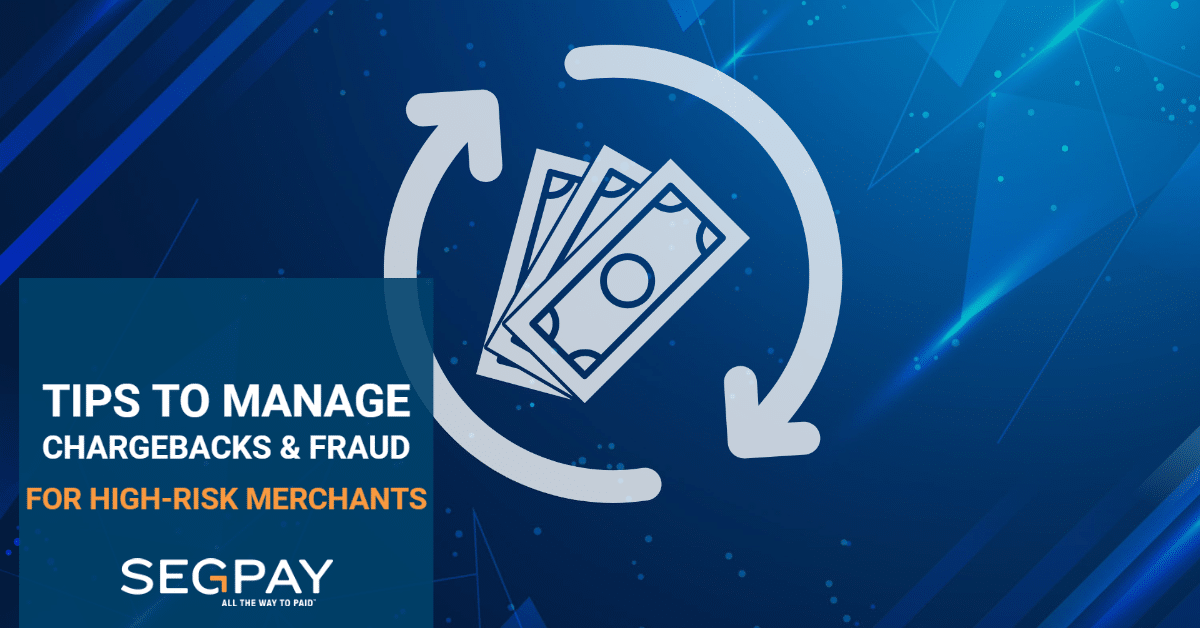Key Takeaways
- Too many chargebacks can lead to banks freezing or even shutting down accounts they deem too high a risk.
- High-risk merchant accounts are expensive.
- Managing chargebacks and preventing fraud is vital.
- The right payment processor can help.
- 5 minute read
High-risk merchant accounts are much more expensive than their low-risk counterparts. Since chargebacks help add to a “high-risk” reputation, it is incredibly important for businesses already labeled high-risk to mitigate chargebacks whenever possible.
Chargeback Prevention and Management
Managing chargebacks and chargeback fraud prevention is crucial for maintaining financial stability. If your business is at high risk for chargeback, implementing preventive measures to reduce them is vital.
Preventative measures and smart chargeback management can reduce the chance of being labeled a high-risk merchant account. Mitigating a high-risk reputation is a good tactic for types of businesses that tend to experience more chargebacks and fraud, such as online gambling, adult entertainment, or nutraceuticals.
As any business with a high-risk account knows, such high-risk industries often face increased scrutiny from payment processors and financial institutions. Merchants can avoid increased processing fees or account termination due to excessive chargebacks by effectively managing chargebacks and fraud.
Here are some of the most effective ways to manage and prevent chargebacks and fraud:
Clear Communication and Customer Support
Provide clear and detailed product or service descriptions, terms of use, and refund policies to manage customer expectations.
Ensure prompt and responsive customer support channels to address any concerns or issues, minimizing the likelihood of chargebacks resulting from dissatisfaction.
Strong Fraud Prevention Measures
Implement fraud detection tools and services to identify and prevent fraudulent transactions. These prevention measures may include address verification systems, CVV verification, and IP geolocation checks.
Use advanced fraud management systems that employ machine learning algorithms to detect suspicious patterns and behaviors, flagging potentially fraudulent transactions.
Secure Payment Processing
Utilize reputable and secure payment gateways that comply with industry standards and provide additional layers of security, such as tokenization or encryption of customer data.
Implement 3D Secure (Verified by Visa, Mastercard SecureCode) to add an extra authentication step for online transactions, reducing the risk of unauthorized chargebacks.
Transparent Billing and Charge Descriptor
Clearly display the business name and contact information on customer billing statements, ensuring customers recognize and remember the charge when reviewing their statements.
Avoid ambiguous or misleading billing descriptors that could confuse customers and increase the likelihood of chargebacks.
Effective Dispute Resolution
Establish a streamlined process to address customer disputes promptly and professionally. Responding quickly can increase the chances of resolving the issue before it escalates to a chargeback.
Maintain detailed records of transactions, communication with customers, and any supporting evidence to present in the event of a chargeback dispute.
Monitoring and Analysis
Regularly monitor chargeback rates and reasons to identify trends and patterns. This data can help pinpoint areas for improvement and guide fraud prevention strategies.
Utilize chargeback management tools or services that provide analytics and reporting capabilities to track and analyze chargeback-related metrics.
Continuous Improvement
Stay updated on industry best practices, fraud trends, and regulatory changes to adapt and enhance fraud prevention measures.
Establish Strong Verification Processes
Implement robust authentication procedures to verify customer identities. Some options included two-factor authentication (2FA) or email/phone verification.
Utilize address verification systems (AVS) to match the billing address provided by the customer with the address on file with the issuing bank.
Utilize Fraud Detection and Prevention Tools and Services
Employ advanced fraud detection tools that analyze transaction patterns, IP addresses, geolocation data, and other parameters to identify potentially fraudulent transactions.
Consider using machine learning algorithms or AI-based fraud prevention systems that can adapt and learn from new patterns of fraudulent behavior.
Make Sure Refund and Cancellation Policies Are Clear
Make sure your refund and cancellation policies are clearly stated and easily accessible on your website or during the checkout process.
Clearly communicate any restrictions or limitations on refunds or cancellations, such as timeframes or conditions for eligibility.
Optimize Product Descriptions to Set Adequate Customer Expectations
To set realistic customer expectations, provide accurate and detailed product descriptions, including specifications, features, and limitations.
Display clear terms and conditions, delivery times, and any potential restrictions to avoid misunderstandings that could lead to chargebacks.
Step Up Dispute Resolution Efforts
Make it easy for customers to contact your support team in case of any issues or concerns.
Promptly address customer disputes and attempt to resolve them amicably before they escalate into chargebacks.
Properly Train and Educate Staff
These tips will only work if your staff knows how to implement them. First, assess your training needs.
You need to know what they don’t know. Start with assessing your staff’s current knowledge and skill levels regarding chargeback prevention and dispute resolution. Identify any knowledge gaps and areas that require improvement.
Then develop comprehensive training materials that cover relevant topics. Provide information on the common causes of chargebacks, such as fraud, disputes, and customer dissatisfaction.
Teach staff how to identify and address potential chargeback triggers, including the importance of accurate product descriptions, prompt order fulfillment, and transparent communication with customers.
Train them on the steps to handle customer disputes effectively. These steps include active listening, empathy, and maintaining a professional and respectful demeanor. Teach them how to gather relevant information, assess the situation objectively, and work towards a satisfactory resolution.
Consider a mix of in-person training, online courses, workshops, and role-playing exercises to ensure active engagement and understanding. Encourage participation, ask for feedback, and address any questions or concerns.
Using real-life scenarios and case studies to illustrate the concepts and challenges related to chargeback prevention and dispute resolution can be helpful. It can help your staff understand the practical application and reinforces the training material.
Another great tool is role-playing. Simulate customer interactions and dispute resolution scenarios. This hands-on practice allows staff to apply the knowledge they have learned and develop their skills in a safe and controlled environment.
Keep your staff up-to-date with the latest industry trends, chargeback prevention techniques, and dispute resolution strategies. Encourage continuous learning through regular training updates, workshops, and access to relevant resources.
Regularly monitor your staff’s performance in handling customer disputes and preventing chargebacks. Provide constructive feedback to help them improve their skills and address any weaknesses. Recognize and reward employees who consistently excel in dispute resolution and chargeback prevention.
Remember that customer service and dispute resolution skills are best developed through practice and experience. Encourage open communication, provide a supportive environment, and foster a customer-centric culture within your organization.
Choose the Right High-Risk Payment Processor
Choose a payment processor that will partner and collaborate with you when handling high-risk merchant accounts. Some high-risk payment processors even offer services such as chargeback monitoring, management, and prevention tools. Work closely with them to leverage their expertise and tools to reduce the risk of chargebacks effectively.
In the end, the key is to keep customers happy and use all of the resources at your disposal to manage the chargebacks that do occur. The easiest and most effective way to do this is to choose a payment processor that works with high-risk merchant accounts to help them reduce financial losses, keep a positive work atmosphere, and ensure their reputation stays intact.
Looking for the Right High-Risk Processing Partner?
Contact us today, we’d love to chat with you about Segpay can help you manage and prevent chargebacks & fraud. It’s another way we are here for our merchants All the Way to Paid ™. Reach out to us with your questions at [email protected] and we can share more about the pros and cons of subscription model options.



